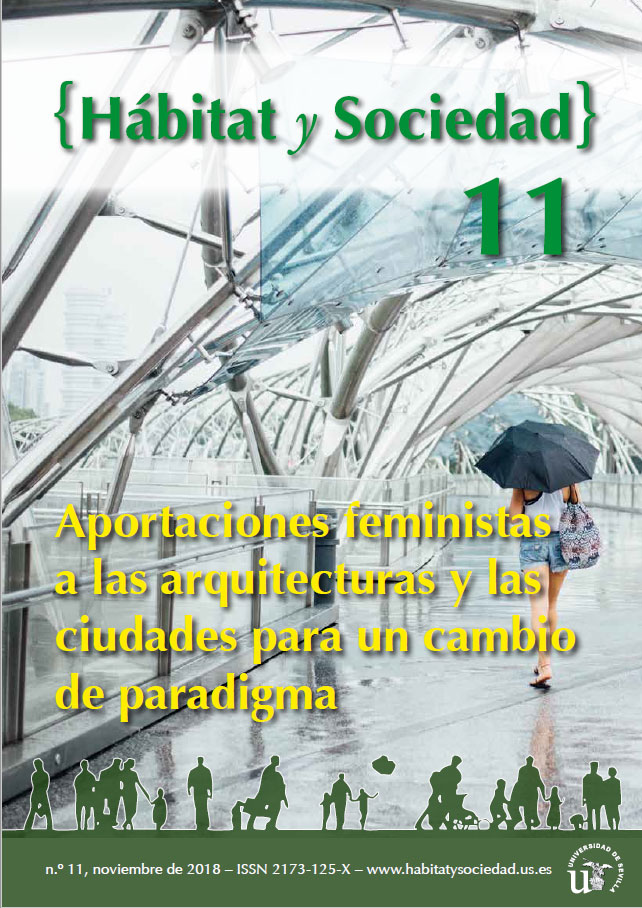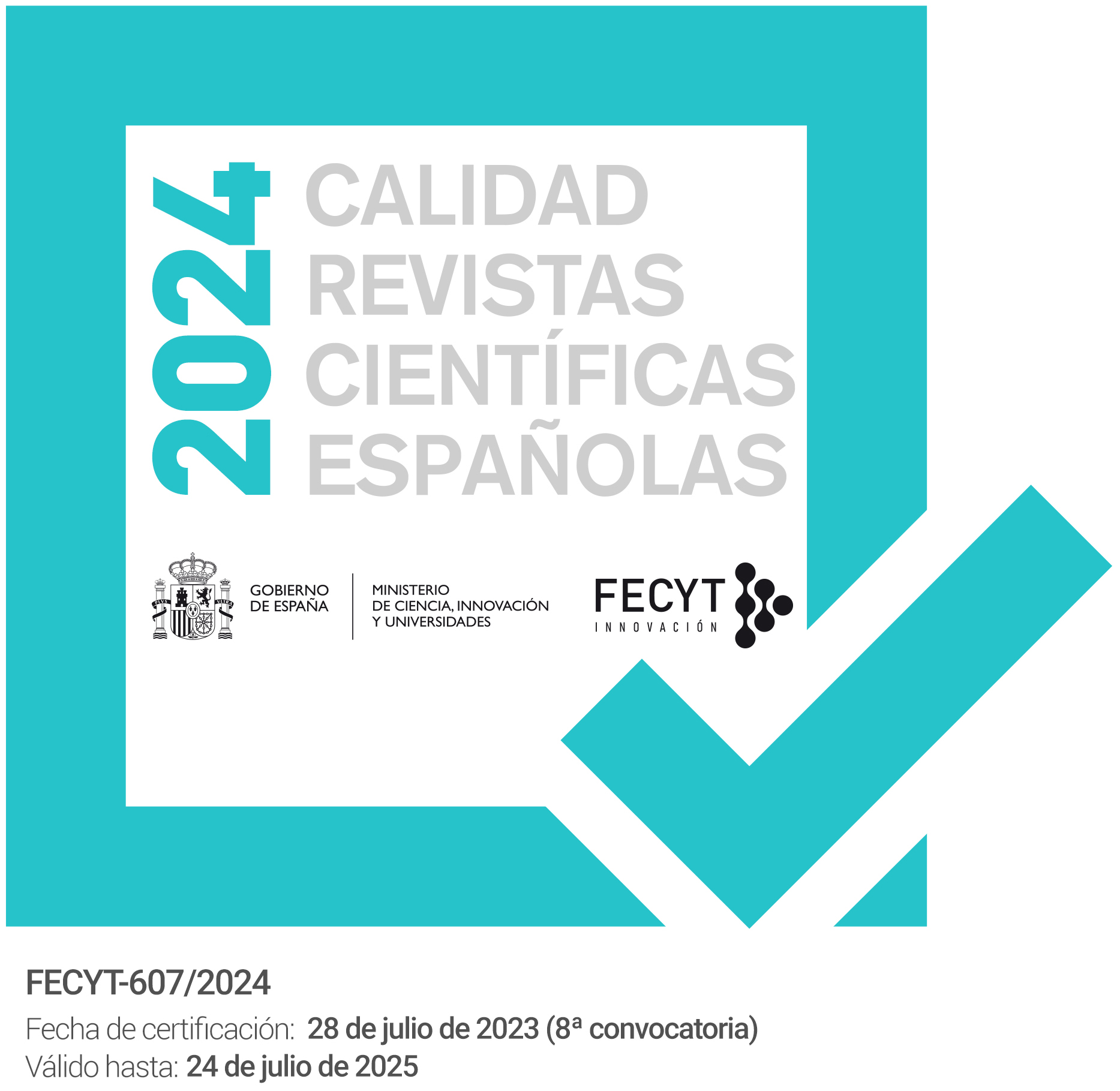Commemorative Urban Practices and Gender Equality: The Case of Santiago de Compostela City’s Urban Toponymy
DOI:
https://doi.org/10.12795/HabitatySociedad.2018.i11.07Palabras clave:
igualdad, feminismo, género, calles, toponimia, mujeres.Resumen
For centuries, decision-making procedures in commemorative urban practices have established a methodology of recognition relying on an androcentric process which has implied closing and exclusion mechanisms. Structures of economic and cultural dominating power favoured the particular interests of a privileged minority, penalizing, limiting and constraining the inclusion and visibility of a wide and plural range of human beings, mainly women. This bias was historically questioned by feminist theory and gender mainstreaming policies, which focuses on how different gender gap affects women to improve justice, progress and dignity standard of all people in different territories. Through the study of Santiago de Compostela’s urban toponymy, we will discuss how differences between social groups still persist, discussing, if applicable, how to produce effective changes that potentially resolve inequality situations.
Other forms of imagination and resistance can emerge at a symbolic level, also, in the way of the streets of our cities are named.
Descargas
Métricas
Citas
Alderman, Derek H., & Inwood, Joshua (2013). Street naming and the politics of belonging: Spatial injustices in the toponymic commemoration of Martin Luther King Jr. Social and Cultural Geography, 14(2), 211–233. https://doi.org/10.1080/14649365.2012.754488
Arias Chachero, Patricia (2007). Mulleres na Rúa: Sobre Toponimia Urbana. Andaina, Revista galega de pensamiento feminista 46, 46-49. Retrieved from https://issuu.com/petapouca/docs/andaina_46.
Azaryahu, Maoz (1986). Street Names and Political Identity: The Case of East Berlin. Journal Of Contemporary History, 21(4), 581–604.
Azaryahu, Maoz (1996). The Power of Commemorative Street Names. Environment and Planning D: Society and Space 14, 311-330.
Azaryahu, Maoz & Foote, Kenneth E. (2008). Historical space as narrative medium: On the configuration of spatial narratives of time at historical sites. GeoJournal, 73(3), 179–194.
Concello de Santiago de Compostela (2012). Proposta da alcaldía de nomes para as novas rúas en Santiago de Compostela, Retrieved from: http://www.santiagodecompostela.gal/imxd/noticias/doc/1330020429ruas_def.pdf.
EFE (2008, Oct. 28). La paridad de género llega a los nombres de las calles de Florencia”, El País. Retrieved from: http://sociedad.elpais.com/sociedad/2008/10/28/actualidad/1225148404_850215.html.
Eldestein, Josefina (2017, March 7). Sólo el 3,2 % de las calles cordobesas llevan nombre de mujer. La Voz. Retrieved from http://www.lavoz.com.ar/ciudadanos/solo-el-32-de-las-calles-cordobesas-llevan-nombre-de-mujer.
Foote, Kenneth E.; Azaryahu, Maoz (2007). Toward a Geography of Memory: Geographical Dimensions of Public Memory and Commemoration. Journal of Political and Military Sociology, 35(1), 1–20.
de la Cruz, Francisco Javier et al. Palencia y sus calles, una cuestión de género. Retrieved from https://sites.google.com/site/callespalencia/.
Giraut, Frédéric & Houssay-Holzschuch, Myriam (2008). Au nom des territoires! Enjeux géographiques de la toponymie. Espace Géographique, 2(37), 97–105.
Giraut, Frédéric & Houssay-Holzschuch, Myriam (2008). Néotoponymie: formes et enjeux de la dénomination des territoires émergents. L’Espace Politique, 5(2), 1–8. https://doi.org/10.4000/espacepolitique.161
Giraut, Frédéric & Houssay-Holzschuch, Myriam (2016). Place Naming as Dispositif: Toward a Theoretical Framework. Geopolitics, 21(1), 1–21. https://doi.org/10.1080/14650045.2015.1134493
Giraut, Frédéric & Houssay-Holzschuch, Myriam (2017). Au-delà du toponyme, la dimension politique de la territorialisation par la nomination. In S. Pasquali & J. González (Eds.), Actes du Colloque: Au delà du Toponyme. Approche interdisciplinaire de la territorialité. Egypte et Méditerranée anciennes. 27-28 octobre 2015. Montpellier.
Guerra Palmero, María José (1999). Mujer, Identidad y Espacio Público. Contrastes: Revista Interdisciplinar de Filosofía 4, 45-64.
Haraway, Donna (1988). Situated Knowledges: The Science Question in Feminism and the Privilege of Partial Perspective. Feminist Studies 14, 575-599. DOI: https://doi.org/10.2307/3178066.
Hayden, Dolores (1997). The Power of Place: Urban Landscapes as Public History. USA: The MIT Press.
Kuri Pineda, Edith E. (2013). Representaciones y significados en la relación espacio-sociedad: una reflexión teórica. Sociológica, 28(78), 69–98.
Kuri Pineda, Edith E. (2017). La Construcción Social de la Memoria en el Espacio: una Aproximación Sociológica, Península 12(1), 9-30. DOI: https://doi.org/10.1016/j.pnsla.2017.01.001.
Light, Duncan & Young, Craig (2014). Toponymy as Commodity: Exploring the Economic Dimensions of Urban Place Names. International Journal of Urban and Regional Research, 435–450. https://doi.org/10.1111/1468-2427.12153
Llaneras, Kiko (2017, Jan. 7). Ellos son doctores, ellas vírgenes y santas. El País. Retrieved from: http://politica.elpais.com/politica/2017/01/06/actualidad/1483666778_781495.html.
O Estadão and FCB Brazil. Projecto 16%. Retrieved from http://16porcento.com.br/.
Rose-Redwood, Reuben, Alderman, Derek H., & Azaryahu, Maoz (2010). Geographies of toponymic inscription: New directions in critical place-name studies. Progress in Human Geography, 34(4), 453–470. https://doi.org/10.1177/0309132509351042
Rose-Redwood, Reuben (2011). Rethinking the agenda of political toponymy. ACME: An International E-Journal for Critical Geographies, 10(1), 34–41.
Rose-Redwood, Reuben (2011). Critical Interventions in Political Toponymy. ACME: An International E-Journal for Critical Geographies, 10(1), 1–6.
S. Sánchez, Vega (2016, Nov. 24). ¿Cuántas calles de Barcelona tienen nombre de mujer? El Periódico. Retrieved from: http://www.elperiodico.com/es/noticias/extra/calles-barcelona-nombre-mujer-5649804.
Shoval, Noam (2013). Street-naming, tourism development and cultural conflict: the case of the Old City of Acre / Akko / Akka. Transactions of the Institute of British Geographers, 38(4), 612–626. https://doi.org/10.1111/tran.12003
Tucker, Brian & Rose-Redwood, Reuben (2015). Decolonizing the map? Toponymic politics and the rescaling of the Salish Sea. The Canadian Geographer, 59(2), 194–206. https://doi.org/10.1111/cag.12140
Wingley, Mark (1992). Untitled: The Housing of Gender. In Colomina, Beatriz (ed.), Sexuality & Space, New York: Princeton Architectural Press, 327–389.
Yanushkevich, Irina (2014). Semiotics of Social Memory in Urban Space: The Case of Volgograd (Stalingrad). International Journal of Cognitive Research in Science, Engineering and Education 2, 43-50.
Descargas
Publicado
Cómo citar
Número
Sección
Licencia
Los autores/as que publiquen en esta revista aceptan las siguientes condiciones:
1. Los autores/as conservan los derechos de autor y ceden a la revista el derecho de la primera publicación, con el trabajo registrado con la licencia de atribución de Creative Commons, que permite a terceros utilizar lo publicado siempre que mencionen la autoría del trabajo y a la primera publicación en esta revista.
2. Los autores/as pueden realizar otros acuerdos contractuales independientes y adicionales para la distribución no exclusiva de la versión del artículo publicado en esta revista (p. ej., incluirlo en un repositorio institucional o publicarlo en un libro) siempre que indiquen claramente que el trabajo se publicó por primera vez en esta revista.
3. Se permite y recomienda a los autores/as a publicar su trabajo en Internet (por ejemplo en páginas institucionales o personales) antes y durante el proceso de revisión y publicación, ya que puede conducir a intercambios productivos y a una mayor y más rápida difusión del trabajo publicado (vea The Effect of Open Access).
Aceptado 2018-07-20
Publicado 2018-11-08
- Resumen 522
- PDF (English) 261













